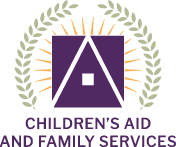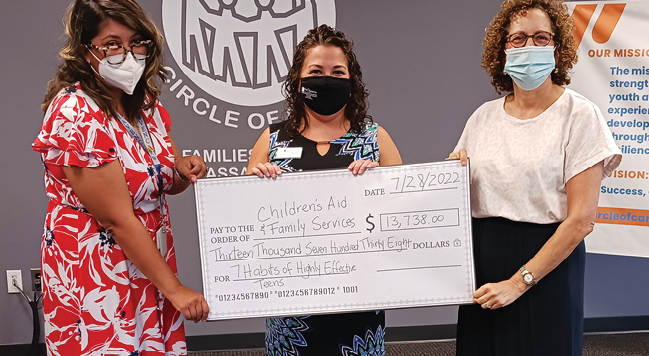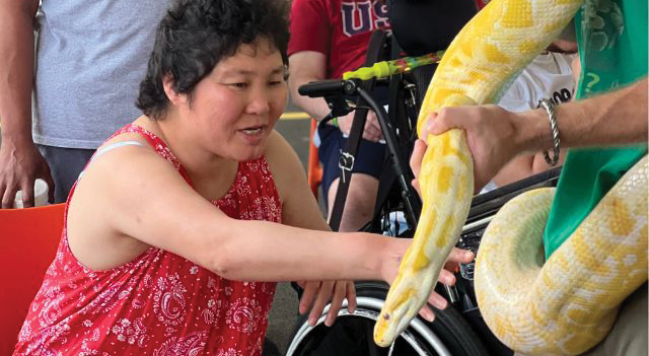Empathy and Love: Treatment Foster Care Homes Provide Both

Treatment Foster Care is a crucial component of our services to vulnerable children and families. A short-term, intensive trauma and evidence-based program for children ages 5-18, Treatment Foster Care helps children learn how to live in a family environment, so they may return to their family as soon as possible.
Exposed to intense trauma, children in Treatment Foster Care have learned coping behaviors that may not appear to be helpful but may have protected them from further harm. Provided with structure, patience, and nurturing by specially trained caregivers, as well as one-to-one counseling and family therapy, the children learn to thrive in a family environment.
Sylvia Bernard is our Family Engagement and Community Outreach Specialist, and speaks glowingly of the outcomes she’s seen. She witnessed the impact on one child at our annual Parent Appreciation dinner, when a boy who previously had been impulsive asked his caregivers for permission to get dessert. “He’s much calmer than the high-energy child that he was when he came in,” said Sylvia. “If you see, as I do, what the children were like when they came in and where they are now, you would appreciate how much they’ve progressed.”
Helping Children to Stay in the Community
Treatment Foster Care helps children achieve goals and improve their ability to expand social connections and interact with their families. Most important, the program enables children to remain in their community and avoid residential, institutional or inpatient settings. Children contribute to setting goals for their treatment plan, with the primary goal being a reduction in problem behaviors and eventual reunification with their birth or foster parents. Stays can last as long as a year, but are typically shorter. Caregivers undergo screening and continuous training and education, along with strategies for guiding the child in their care.
Sylvia emphasizes that the caregivers are the key to successful outcomes: their willingness to work with her team, as well as caseworkers, teachers and, most important, the child. “The caregiver parents understand that these are children, they’re learning, and where they are today is not where they will be tomorrow. And they’ll take what they’re learning with them.”
Continual need for Treatment Foster Care Caregiver Parents
Children’s Aid has 21 Treatment Foster Care families, serving 15 children or more each year, and is always recruiting new caregivers. “The pandemic affected how many children were referred, and many of the children who entered Treatment Foster Care during the pandemic have been reunited with their birth families,” says Marcia Fisher, Administrator of Treatment Foster Care. “All of the children experience grief and loss because they’re not with their families, and many have behavioral and mental health issues, so the Treatment Foster Care caregivers must be very supportive.”
Sylvia is proud that her team has doubled the number of caregivers in the pool since she’s been here. Of the children placed in our Treatment Foster Care last year, 85% show improved school performance, and toward the primary goal of reunifying families, 70% were discharged to a less restrictive level of care, including family reunifications and adoptions.
“It’s not enough that we want parents to be in our pool as foster or caregiver parents: we have to ensure they understand that the children must be treated with empathy and love,” Sylvia says.



